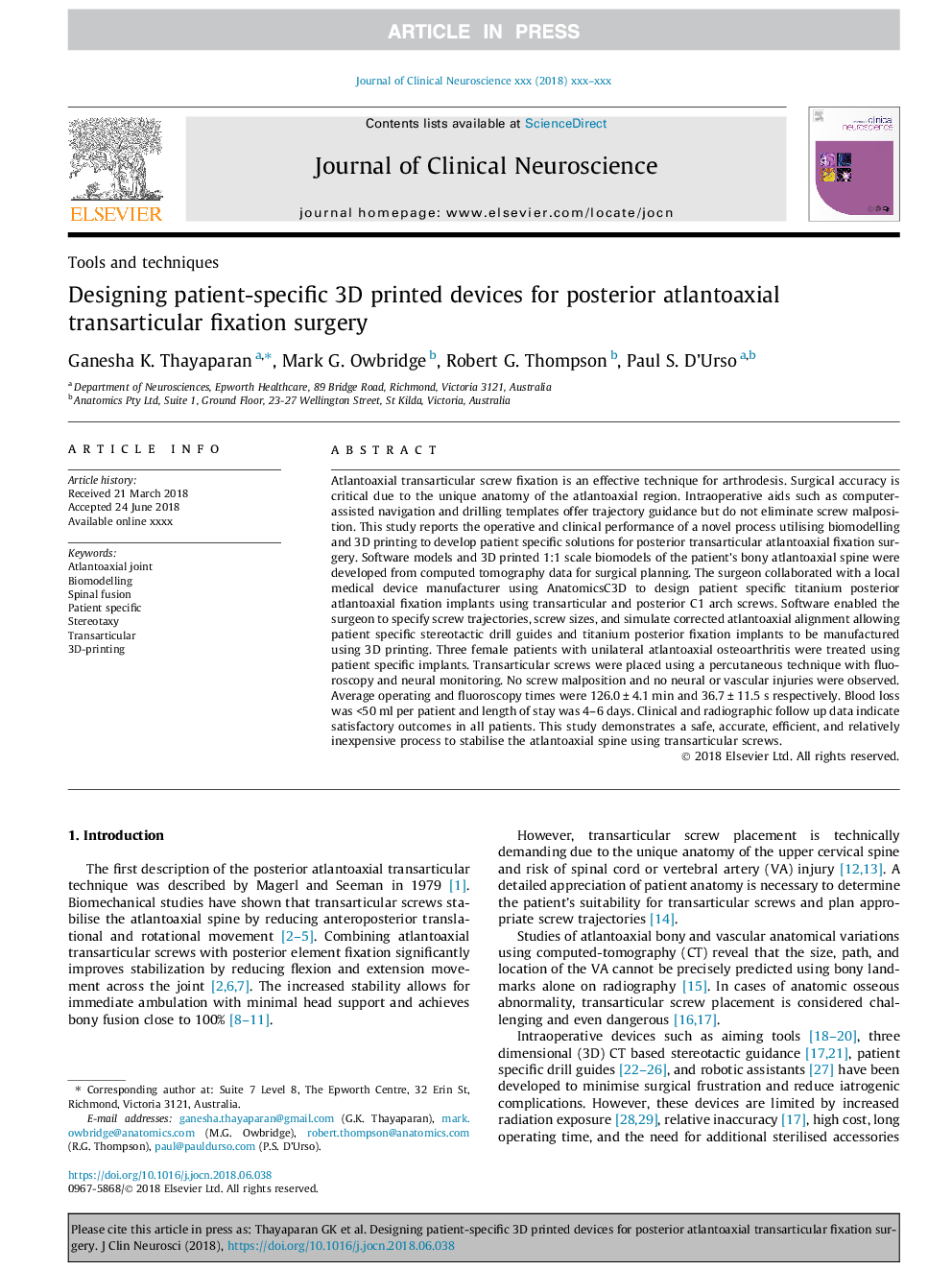| کد مقاله | کد نشریه | سال انتشار | مقاله انگلیسی | نسخه تمام متن |
|---|---|---|---|---|
| 11009535 | 1826478 | 2018 | 7 صفحه PDF | دانلود رایگان |
عنوان انگلیسی مقاله ISI
Designing patient-specific 3D printed devices for posterior atlantoaxial transarticular fixation surgery
دانلود مقاله + سفارش ترجمه
دانلود مقاله ISI انگلیسی
رایگان برای ایرانیان
کلمات کلیدی
موضوعات مرتبط
علوم زیستی و بیوفناوری
علم عصب شناسی
عصب شناسی
پیش نمایش صفحه اول مقاله

چکیده انگلیسی
Atlantoaxial transarticular screw fixation is an effective technique for arthrodesis. Surgical accuracy is critical due to the unique anatomy of the atlantoaxial region. Intraoperative aids such as computer-assisted navigation and drilling templates offer trajectory guidance but do not eliminate screw malposition. This study reports the operative and clinical performance of a novel process utilising biomodelling and 3D printing to develop patient specific solutions for posterior transarticular atlantoaxial fixation surgery. Software models and 3D printed 1:1 scale biomodels of the patient's bony atlantoaxial spine were developed from computed tomography data for surgical planning. The surgeon collaborated with a local medical device manufacturer using AnatomicsC3D to design patient specific titanium posterior atlantoaxial fixation implants using transarticular and posterior C1 arch screws. Software enabled the surgeon to specify screw trajectories, screw sizes, and simulate corrected atlantoaxial alignment allowing patient specific stereotactic drill guides and titanium posterior fixation implants to be manufactured using 3D printing. Three female patients with unilateral atlantoaxial osteoarthritis were treated using patient specific implants. Transarticular screws were placed using a percutaneous technique with fluoroscopy and neural monitoring. No screw malposition and no neural or vascular injuries were observed. Average operating and fluoroscopy times were 126.0â¯Â±â¯4.1â¯min and 36.7â¯Â±â¯11.5â¯s respectively. Blood loss was <50â¯ml per patient and length of stay was 4-6â¯days. Clinical and radiographic follow up data indicate satisfactory outcomes in all patients. This study demonstrates a safe, accurate, efficient, and relatively inexpensive process to stabilise the atlantoaxial spine using transarticular screws.
ناشر
Database: Elsevier - ScienceDirect (ساینس دایرکت)
Journal: Journal of Clinical Neuroscience - Volume 56, October 2018, Pages 192-198
Journal: Journal of Clinical Neuroscience - Volume 56, October 2018, Pages 192-198
نویسندگان
Ganesha K. Thayaparan, Mark G. Owbridge, Robert G. Thompson, Paul S. D'Urso,